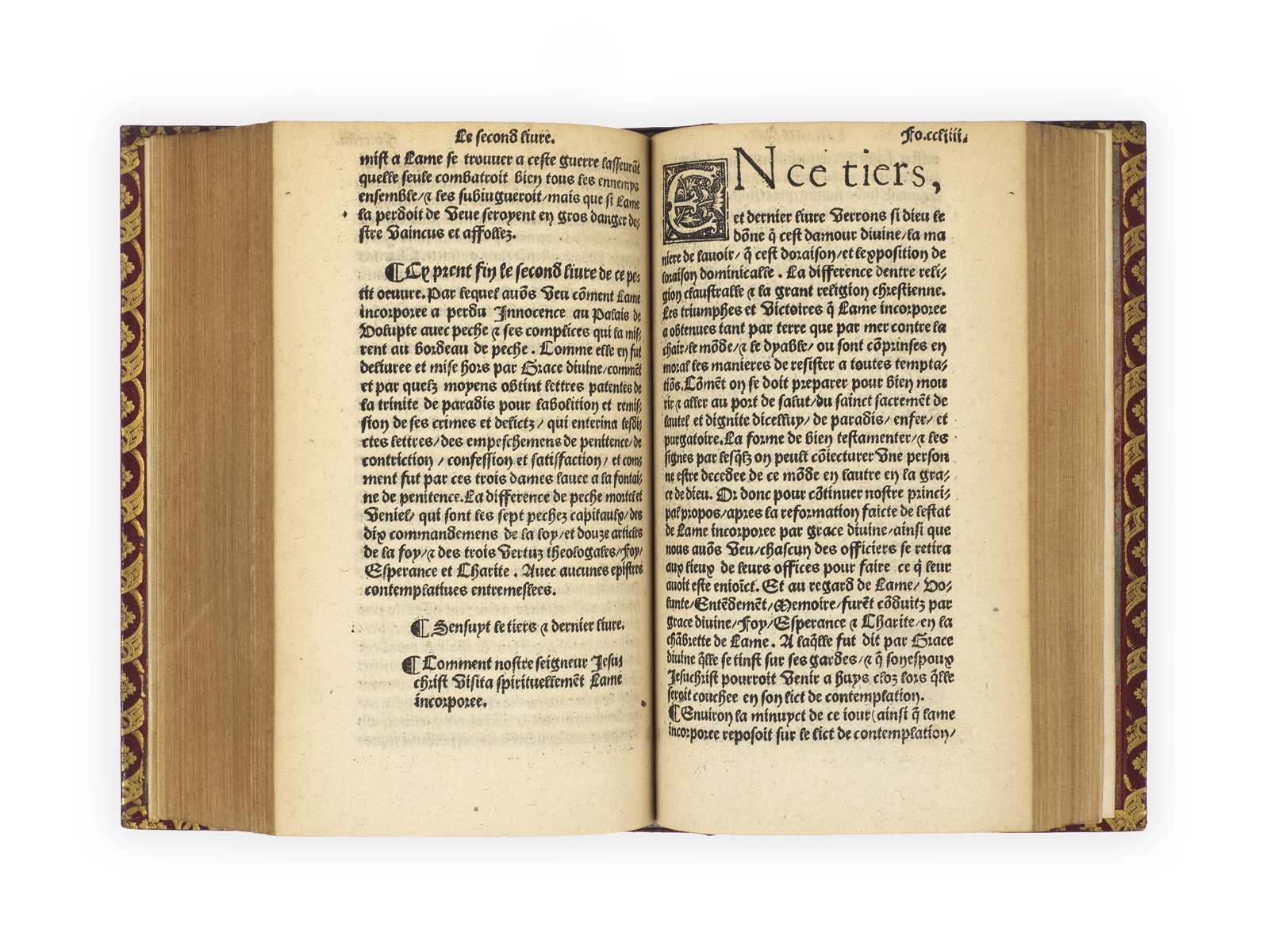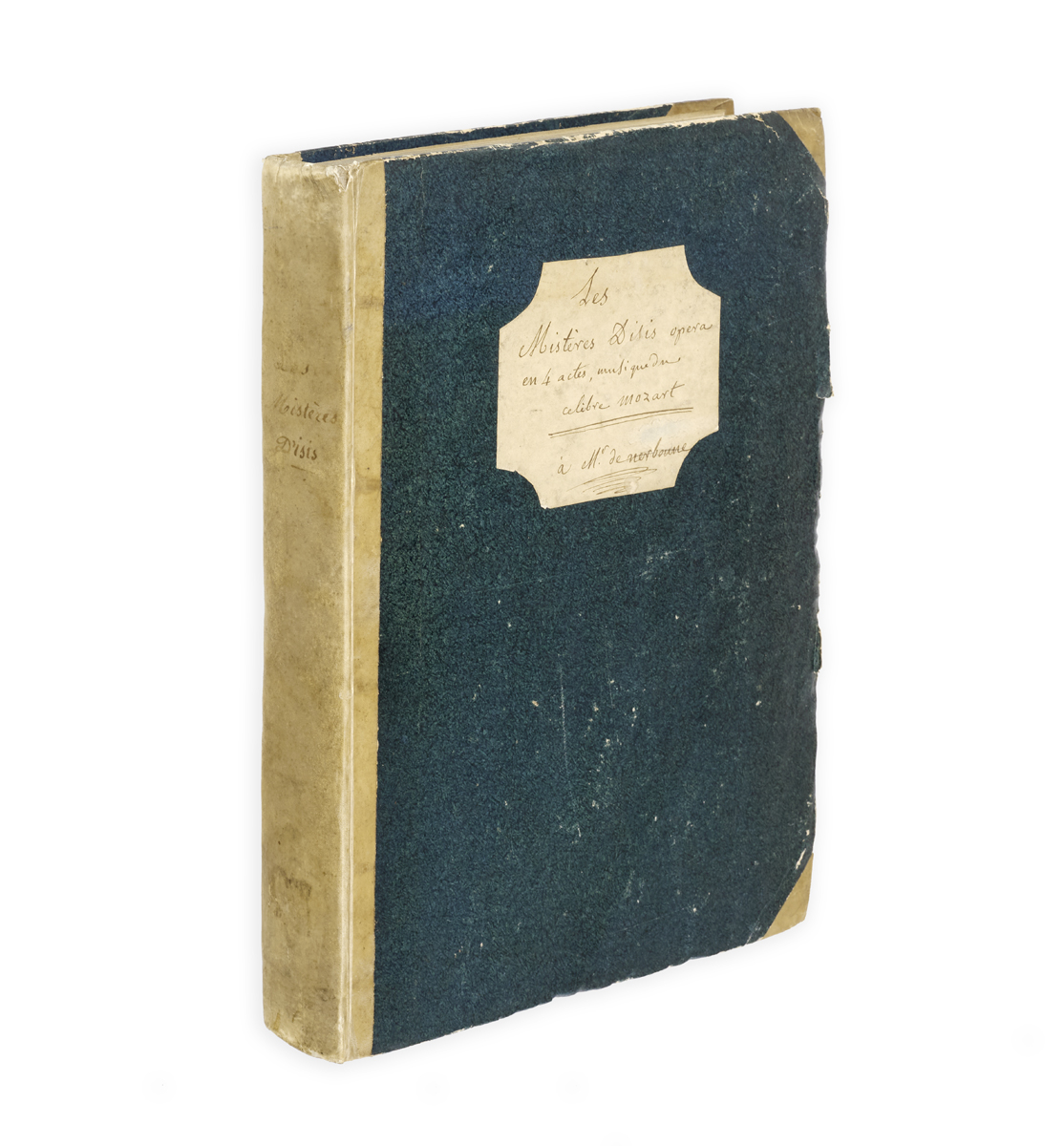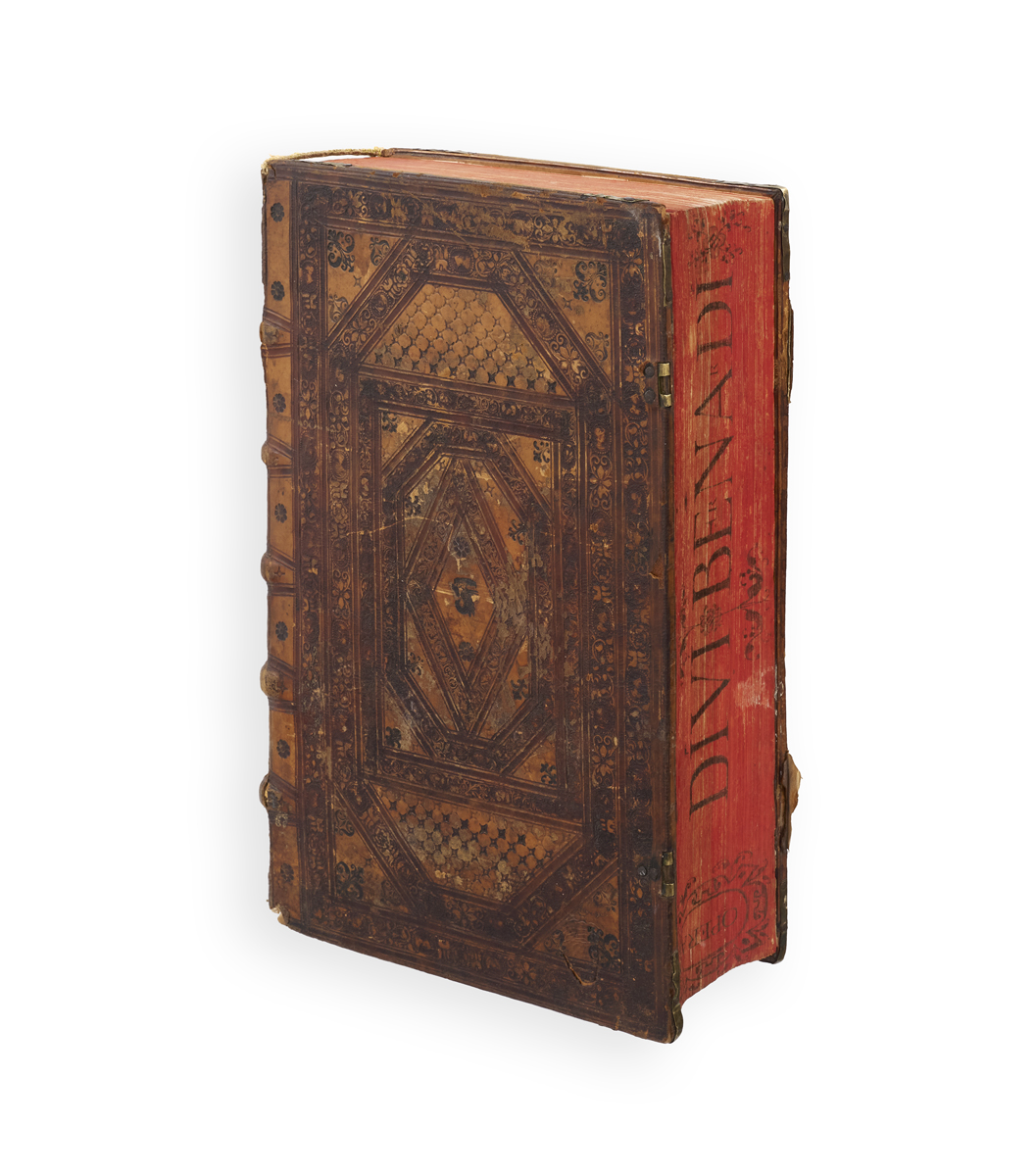
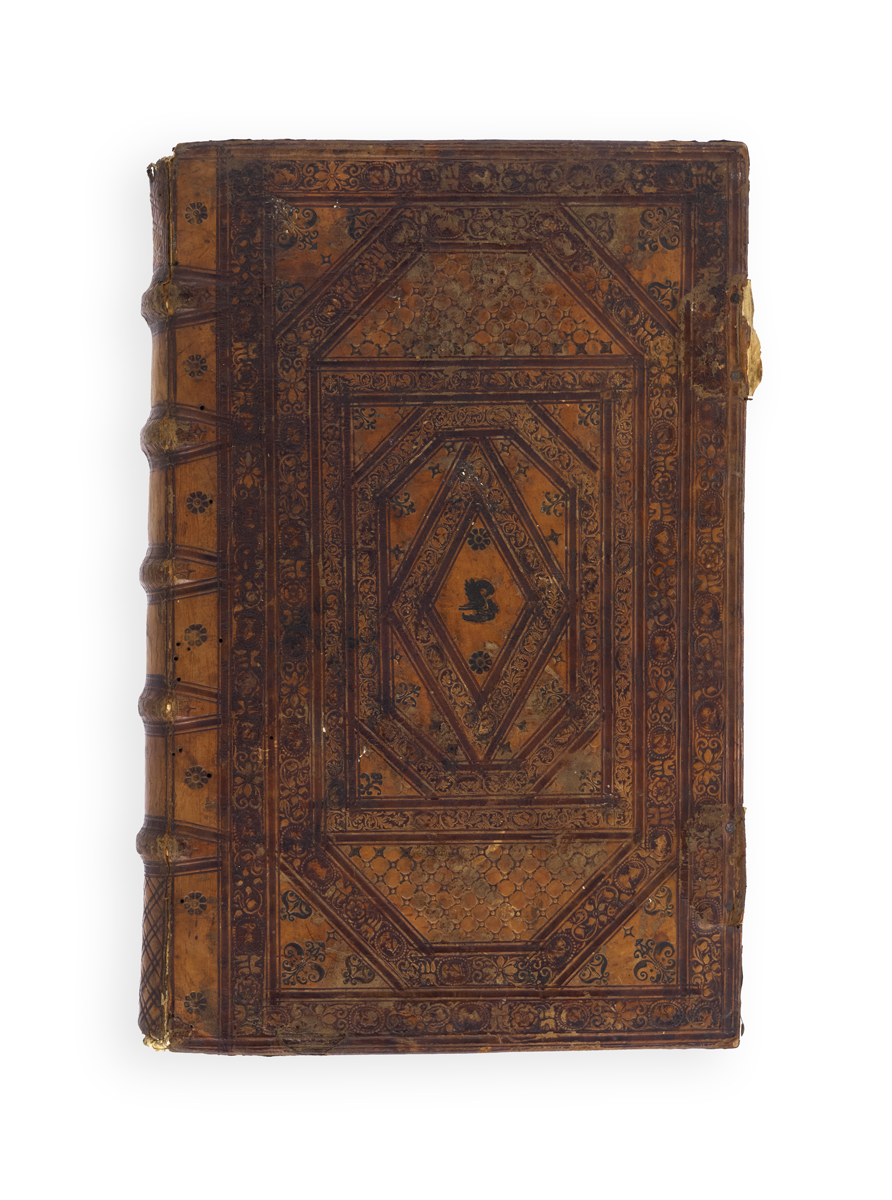
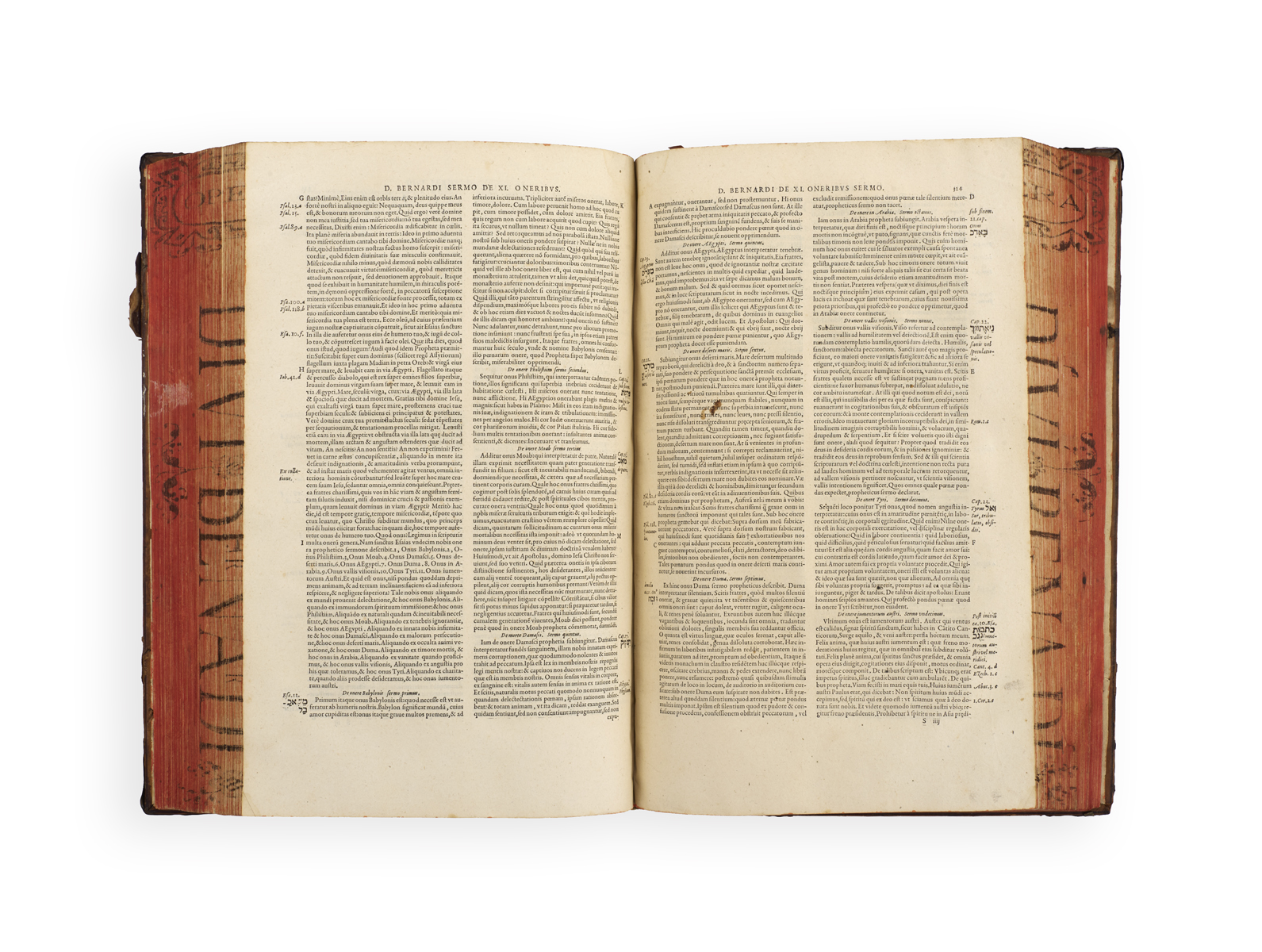
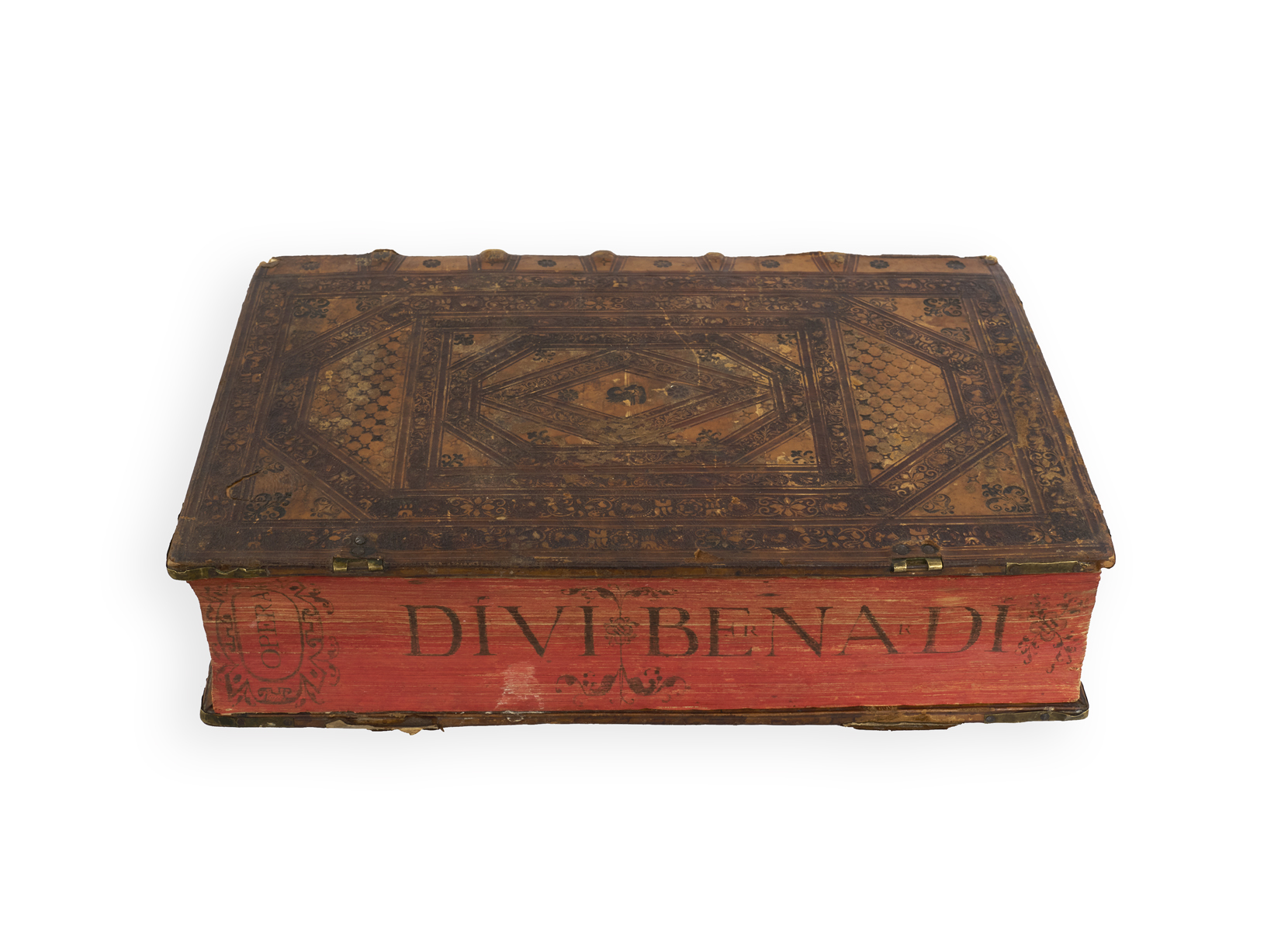
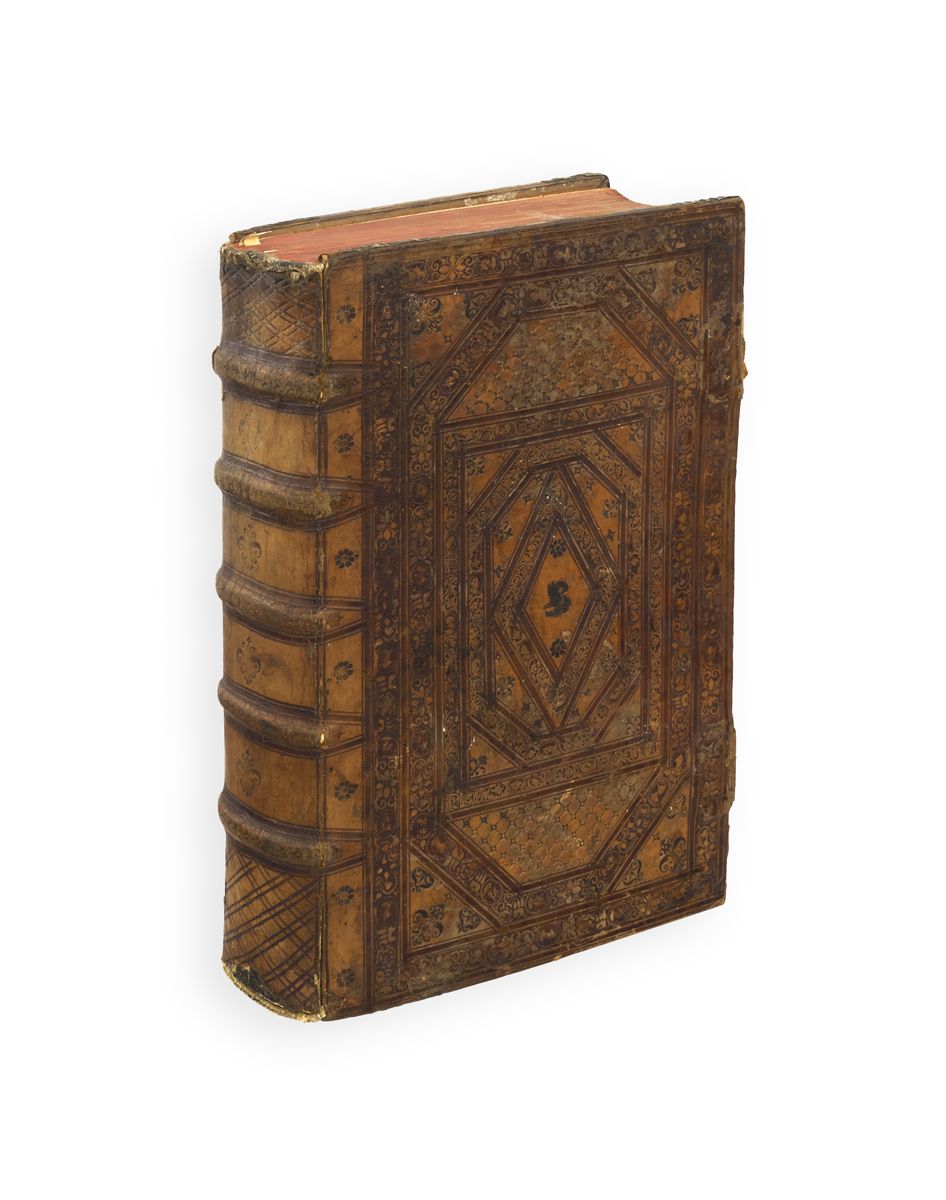
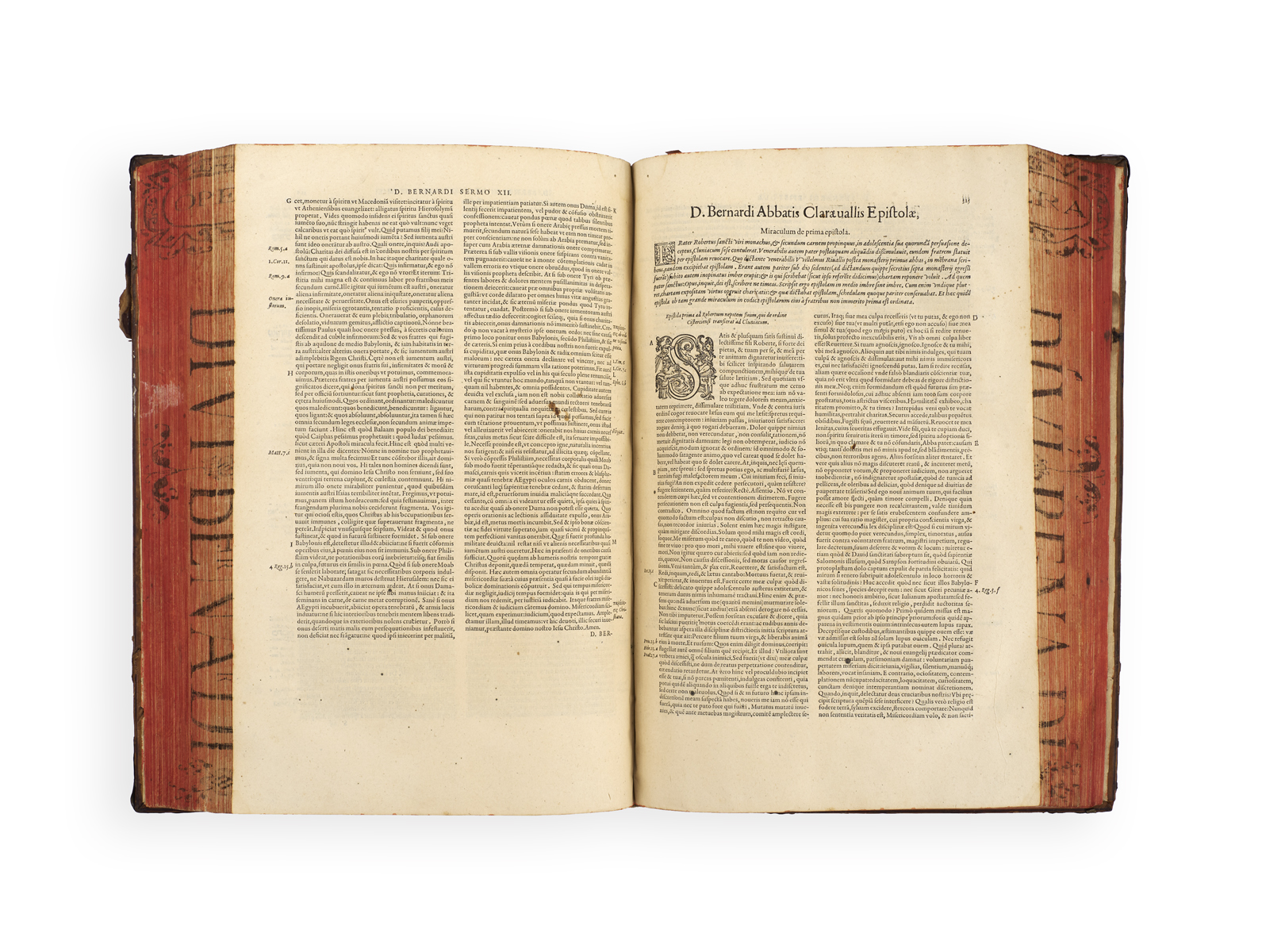
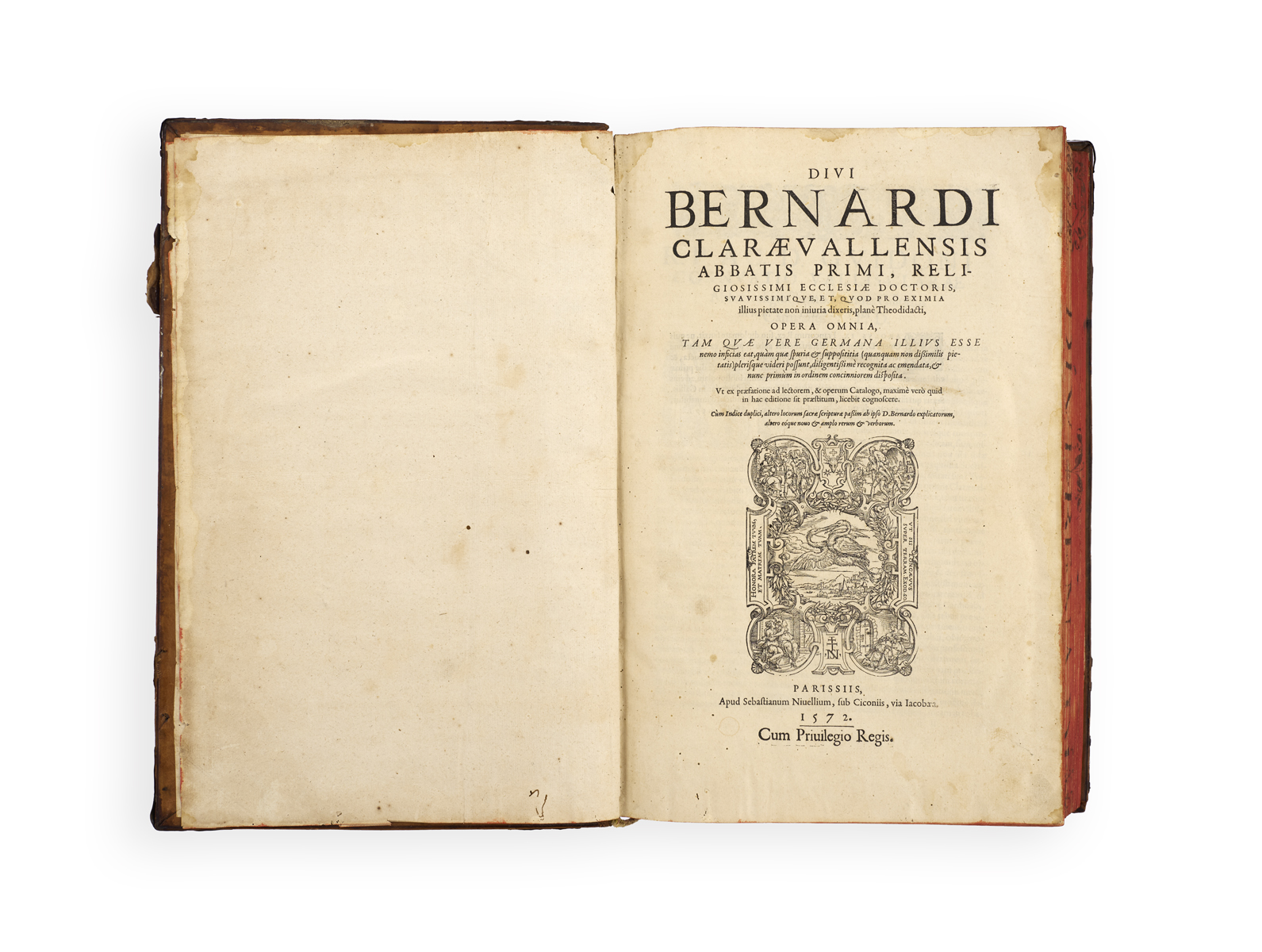
IN A SPANISH PLATERESCA BINDING
BERNARD of Clairvaux.
Opera omnia, tam quae vere germana illius esse nemo inficias eat, quam quae spuria & supposititia (quanquam non dissimilis pietatis) plerisque videre possunt, diligentissime recognita ac emendata …
Paris, [Nicolas Bruslé for] Sébastien Nivelle, [1571-] 1572.
Large folio, ff. [viii], ‘410’ [recte 416], 71, [107]; large woodcut Nivelle device with 5 vignettes to title, large woodcut initials and headpieces; sporadic light marginal dampstaining particularly to upper and outer margins of last few leaves, small wormhole in the inner margin of approx. 100 ff. (not affecting text), a few scattered light spots including an inked fingerprint to f. 397v, but overall an excellent copy; bound in contemporary Spanish plateresca calf over wooden boards, richly tooled in blind to a panel design with five concentric panels comprised of two portrait medallion rolls, central tool of a pelican in its piety, spine blind-tooled in compartments, cross-hatched at head and foot, vestigial clasps to fore-edge, (later?) brass edging to corners, edges stained red, fore-edge elaborately lettered ‘Opera’ (within cartouche) and ‘Divi Bernardi’ in ink with floral decoration, sewn on 5 split tawed thongs laced in, spine lined with manuscript waste; lightly rubbed in places with a few scuffs, short splits to joints, endcaps and headband lost.

Added to your basket:
Opera omnia, tam quae vere germana illius esse nemo inficias eat, quam quae spuria & supposititia (quanquam non dissimilis pietatis) plerisque videre possunt, diligentissime recognita ac emendata …
A rare Parisian edition of the works of Bernard of Clairvaux, beautifully preserved in a contemporary Spanish plateresca binding with elaborate fore-edge lettering.
The binding is a characteristic and characterful example of the Spanish plateresca style. Beyond the attractive decoration of the fore-edge, it is striking both for its complex panel design of concentric polygons, and for the construction of hatched fields by the repeated use of a small four-pointed star tool. For another use of the larger portrait medallion roll and one of the hand-tools, in a more restrained panel design, see Library of Congress 2021666855 (Vetus Testamentum, Alcalá, 1514).
Rare outside Europe, with no copies traced in the US; we find only two copies in the UK (CUL and York Minster), one in Canada (University of Victoria), and one at the National Library of Australia.
Adams B-711. We are grateful to Prof. Nicholas Pickwoad for his advice on the binding.
